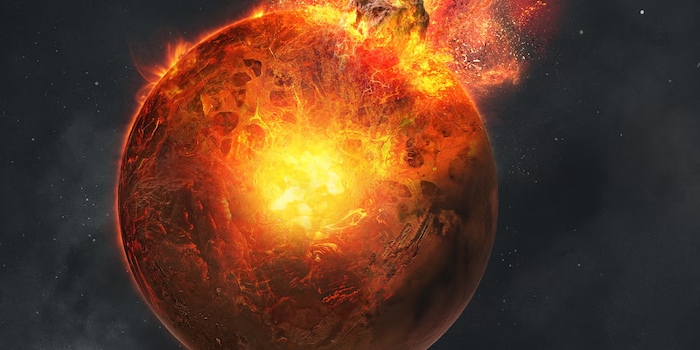
The mantle of Mars is very heterogeneous
The rocky mantle of Mars is not very mixed and contains fragments of different rocks that date back to the history of its formation. This is indicated by analyses of marsquakes recorded by the Insight space probe.
The interior of the red planet Mars is not as homogeneous as long assumed: Analyses of Marsquake waves recorded by NASA's Insight lander over a period of around four years indicate that there are a large number of rock fragments from early times in the planet's rocky mantle. They reach diameters of up to four kilometres and are, in a way, fossils from the planet's wild prehistoric age more than 4.5 billion years ago.
After its formation, Mars was hit by a large number of smaller objects. Their kinetic energy, which was converted into heat, ensured that deep magma oceans once existed on the red planet - just like on the young Earth. When these magma oceans cooled and crystallised, chemically different fragments of rock remained, which can still be detected in the interior of Mars today. The early impacts and their consequences scattered and mixed fragments of the early crust and the planet's rocky mantle as well as material from the impact bodies into the planet's interior.
As Mars slowly cooled, these fragments were trapped in a rocky mantle that moved sluggishly. There was too little mixing to dissolve and chemically homogenise the fragments. Unlike Earth, Mars does not have global plate tectonics, i.e. it does not have several crustal plates that move against each other and are driven by convection processes. Its crust is a single plate, i.e. a closed spherical shell that envelops the interior of the Red Planet.
Indications of these relics from the first 100 million years after the formation of Mars can be found in the seismic data from Insight. In particular, eight Marsquakes caused by small impacts of meteorites on the Martian crust proved to be particularly illuminating. The probe used its highly sensitive seismometer to record how the Marsquake waves propagated in the planet's interior. This showed that high-frequency marsquake waves travelled longer from their point of origin to Insight than longer-wavelength waves. The research group led by Constantinos Charalambous from Imperial College London in the UK attributes this to interference from rock fragments in the Martian mantle, which forced the high-frequency quake waves to take detours.
Spectrum of science
We are partners of Spektrum der Wissenschaft and want to make well-founded information more accessible to you. Follow Spektrum der Wissenschaft if you like the articles.
Original article on Spektrum.de
Experts from science and research report on the latest findings in their fields – competent, authentic and comprehensible.
From the latest iPhone to the return of 80s fashion. The editorial team will help you make sense of it all.
Show all